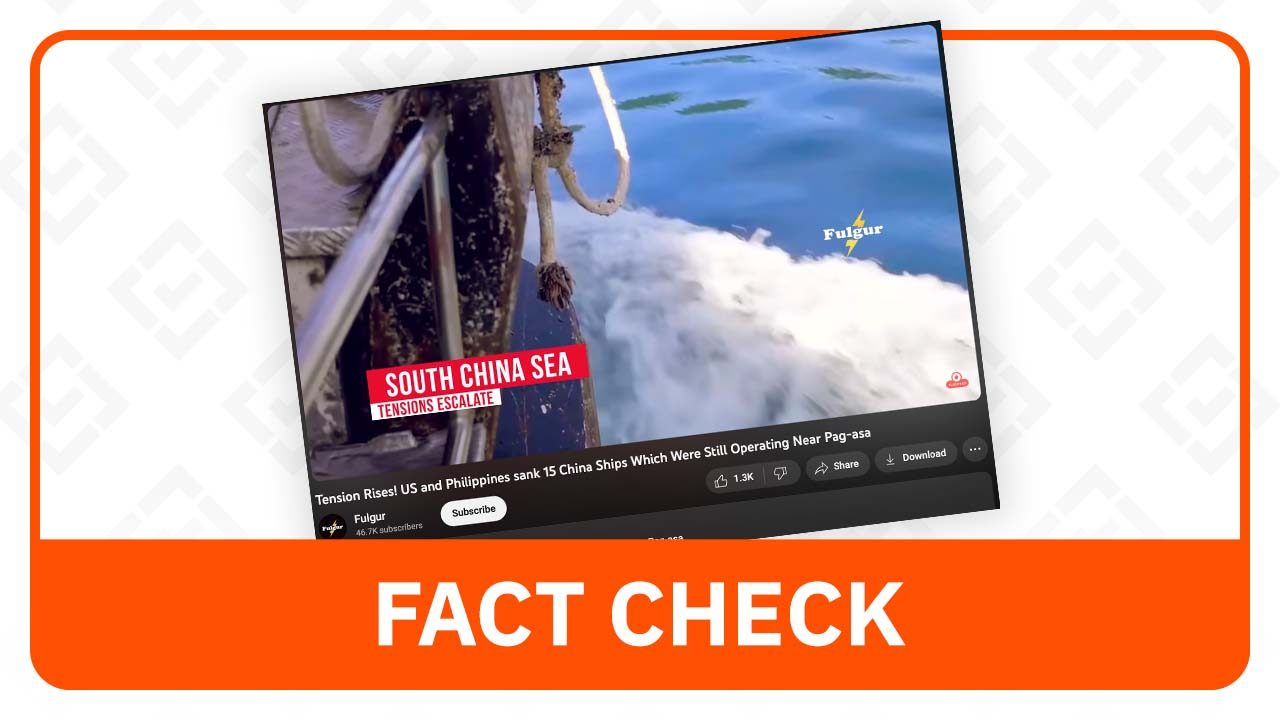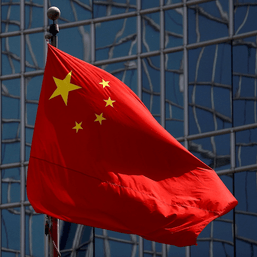SUMMARY
This is AI generated summarization, which may have errors. For context, always refer to the full article.

Claim: The Philippines and the United States sank 15 Chinese vessels spotted operating near Pag-asa Island in the South China Sea.
Rating: FALSE
Why we fact-checked this: The YouTube video bearing the claim was posted on November 21 by a channel with 46,700 subscribers. It has garnered 85,389 views and 1,300 likes as of writing.
The video’s title bears the claim: “Tension rises! US and Philippines sank 15 China ships which were still operating near Pag-asa.”
Footage of a damaged ship was displayed as proof of the “swift response” by the Philippines and the US against the Chinese vessels.

The bottom line: A Chinese vessel was spotted shadowing the recent joint air and sea patrols of the Philippines and the US in the South China Sea, but neither the Philippines nor the US attacked any Chinese ships. The Philippines’ Navy and Department of National Defense, as well as the US Department of Defense, have not reported any such incident either.
The Armed Forces of the Philippines (AFP) said the Chinese ship was shadowing the joint forces during the November 23 patrol, but said there were “no aggressive actions by China.”
Similar incidents: Chinese vessels and aircraft were also seen shadowing the Philippines’ joint air and sea patrols with Australia held last November 25 to 27 in the West Philippine Sea. The AFP said the patrols finished “without any untoward incident.”
Freedom of navigation: The Philippines and the US began their three-day joint patrols on November 21, starting in the vicinity of Batanes and ending in the West Philippine Sea or the parts of the South China Sea within the Philippines’ exclusive economic zone.
President Ferdinand Marcos Jr. said the “heightening tension” in the West Philippine Sea required the country to partner with “allies and friends around the world” to maintain the peace.
The AFP maintained that the joint patrols were not meant to agitate China but to ensure “interoperability” with the US.
Both the Philippines and the US have stressed the right to freedom of navigation in the disputed waters in accordance with the United Nations Convention on the Law of the Sea and the landmark 2016 arbitral ruling striking down China’s expansive claims in the South China Sea. (READ: PH developing ‘whole gov’t’ national strategy in West Philippine Sea)
Amid rising tensions with China, Manila has moved closer to Washington since Marcos took office. The US has also reiterated its “ironclad” defense commitment to the Philippines.
Not a Chinese ship: The footage of a sinking vessel shown in the misleading video was from a 2001 incident, in which a Japanese Coast Guard ship sank a suspected North Korean spy vessel within Japan’s exclusive economic zone. The spy ship was reportedly disguised as a fishing boat when it was intercepted by naval forces.
Rappler has published several fact-checks regarding tensions between the Philippines and China in the West Philippine Sea:
- FACT CHECK: No reports of Taiwan attacking Chinese fishing vessels
- FACT CHECK: China has not given up West Philippine Sea claims
- FACT CHECK: No missiles fired by China at PH ships near Scarborough Shoal
– Kyle Marcelino/Rappler.com
Kyle Marcelino is a graduate of Rappler’s fact-checking mentorship program. This fact check was reviewed by a member of Rappler’s research team and a senior editor. Learn more about Rappler’s fact-checking mentorship program here.
Keep us aware of suspicious Facebook pages, groups, accounts, websites, articles, or photos in your network by contacting us at factcheck@rappler.com. Let us battle disinformation one Fact Check at a time.
Add a comment
How does this make you feel?





![[Hindi ito Marites] Japan: From enemy to bestie](https://www.rappler.com/tachyon/2024/07/Hindi-ito-Marites-TC-ls-7.jpg?resize=257%2C257&crop=415px%2C0px%2C1080px%2C1080px)














There are no comments yet. Add your comment to start the conversation.